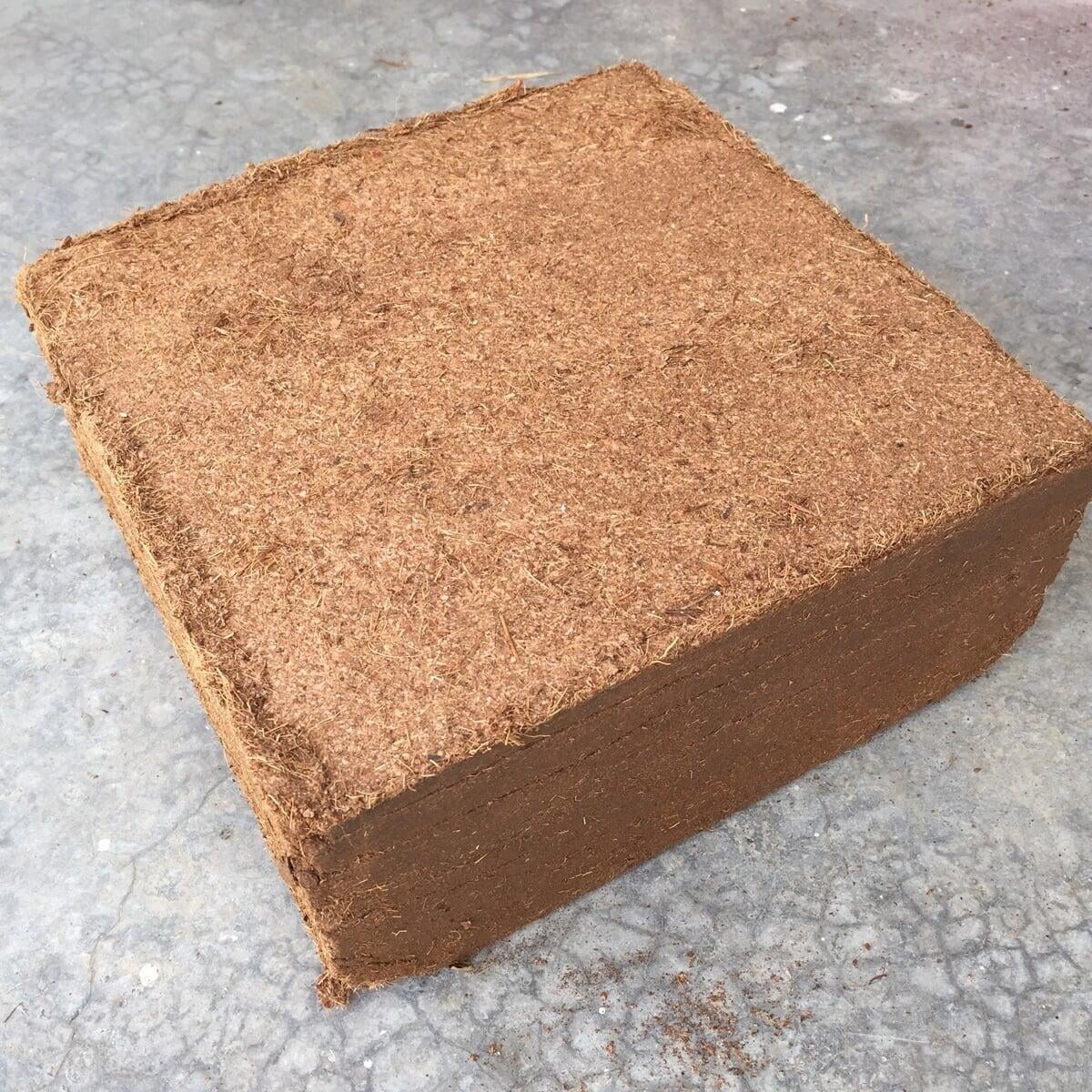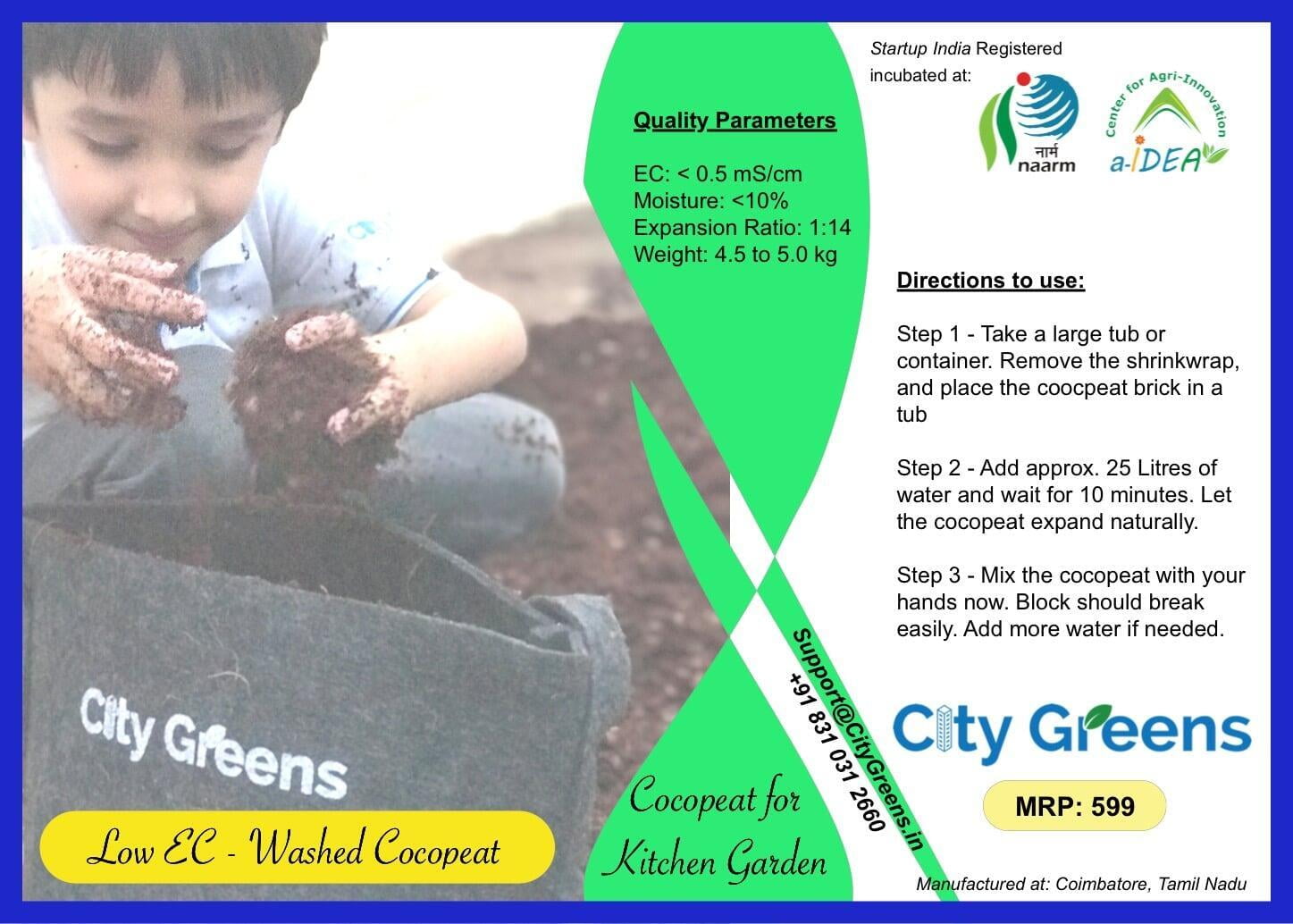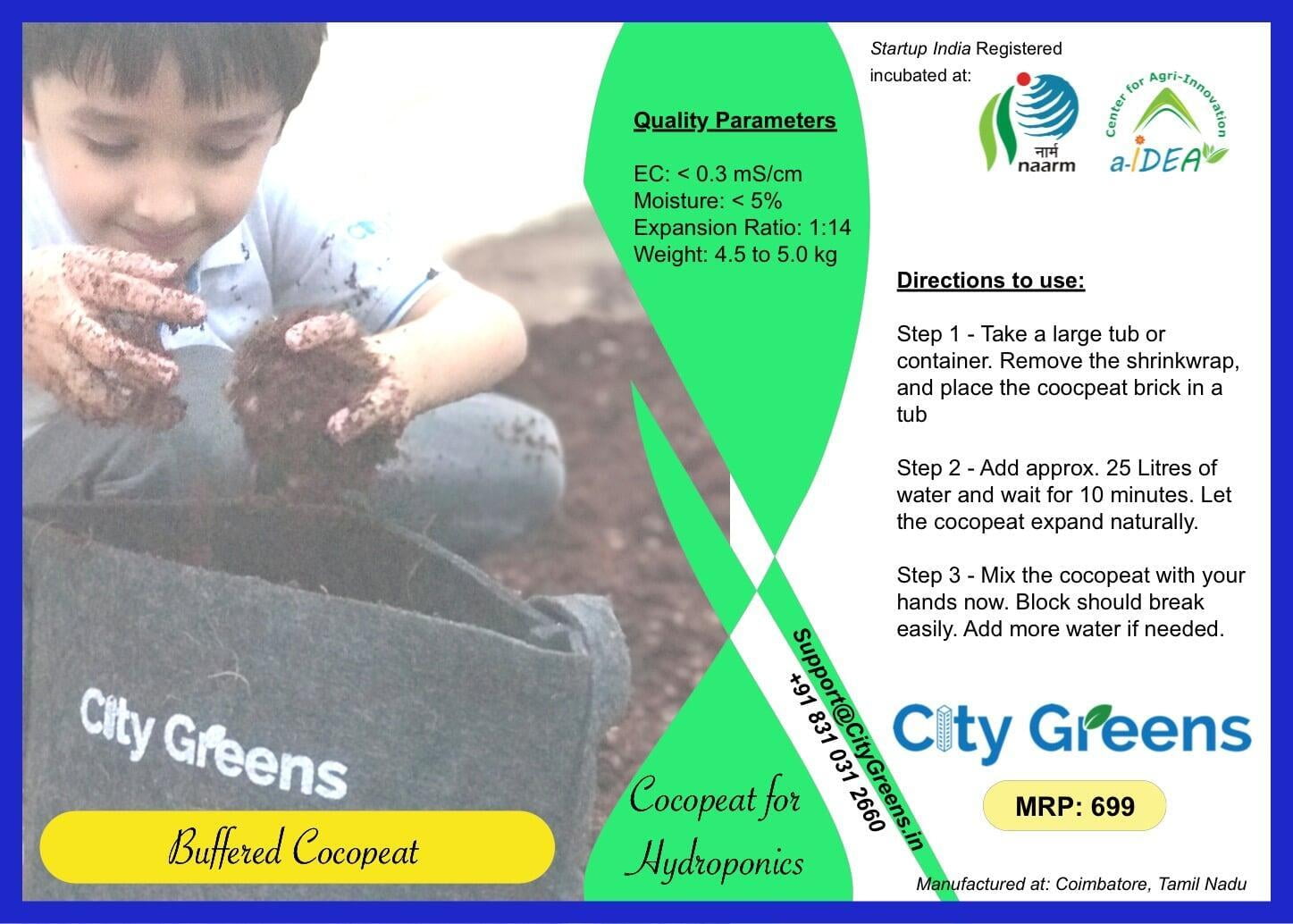What is Cocopeat: Cocopeat derives its name from the fact that it comes from the Coconut tree, also known as ‘Kalpvriksha,’ in Hindu mythology because every part of it is useful in some form or other.
Coconut products used in agriculture fields:
- Coir pith/coco peat obtained from Coconut Husk
- Coco chips- prepared from the outer shell of the coconut used as media in growing plants
- Coco fiber- used as mulch
- Coco fiber planter- coconut fiber is compressed into various containers to grow plants. Ex. Hanging baskets, pots
How to identify high-quality Cocopeat
Within Cocopeat, there are different qualities. The superior grades which have low EC, low moisture, and little fibre cater to export markets. Ideally, Cocopeat should have low EC, low fiber content, pH suitable to needs of the root zone, i.e., 5.5 to 6.5, good expansion ratio (upwards of 1:15). While looking to buy Cocopeat, do look for these parameters before buying. You can also go for Low EC - Washed Cocopeat that is sold by us in our store.
If your use case for Cocopeat is in Hydroponics or for seed germination alone, you can even go for one grade higher version of cocopeat which is known as Buffered Cocopeat. Buffered Cocopeat is cocopeat which is enriched using either Calcium, or Magnesium or both. The buffered cocopeat has even lesser EC and gives great results during seed germination.
How to prepare grow media with Cocopeat
Break the cocopeat block with water and bring it to powder form by mixing it well. Ensure the addition of the right amount of water (should not be too wet or too dry). If using CityGreen’s Cocopeat brick, use as follows:-
- Take a large tub or container. Remove the shrink-wrap and place the cocopeat brick in the tub.
- Add approx. 25 litres of water and wait for 10 minutes. Let the brick absorb water and expand naturally.
- Mix the Cocopeat with your hands now. Blocks should break easily. Add water if needed.
Now add this Cocopeat to soil or add some other inert media to Cocopeat before using it. The reason for same is explained in point No. 3 below.
Gardening tips with Cocopeat
- Adding neem cake to Cocopeat can help avoid nematodes and many fungal infections. You can do that while mixing the Cocopeat.
- Add Cocopeat to Soil (50:50 mix) for improving soil profile. Since Cocopeat has a pH of 5.5 to 6.5, it conditions soil well and also enhances aeration in the soil. This ensures better nutrient uptake by the plants.
- Do not use Cocopeat alone (apart from for germination of seeds). This suggestion is because of the best quality of Cocopeat, which can become a bane if not controlled. We are talking about water holding capacity. Over time, Cocopeat holds a lot of moisture, which leads to compressing of the growing mix. With compression, the air pockets reduce, and the roots can get starved for oxygen leading to slower growth. Thus, it is a good idea to mix Cocopeat with other inert media like vermiculite, perlite, gravel, coco chips, wood shavings, rice husk, or clay pebble, etc. for the better aeration. At CityGreen’s Research Centre for Urban Gardening, our choice of media to mix with Cocopeat is gravel and clay pebbles.
- Do remember that Cocopeat is an inert medium. It does not contain any nutrients of its own. Hence nutrients need to be supplied externally. You can achieve that by mixing the nutrients like compost or manure in Cocopeat or by using liquid nutrients like the ones provided by CityGreens.
Can Cocopeat be used to grow all kind of plants
Yes. All Kinds of plants can be grown in this media. Be it flowers, or succulents, or leafy greens, or vegetables, or root crops, or even medicinal herbs. We have used coco peat to grow many of these plants. We have even grown tall crops like Corn and Sugarcane in Cocopeat.
The easiest and most straightforward way to get rid of all soil-related troubles is to use coco peat. And the availability and affordability make it a very convenient option for any avid gardener! So take heart- try with one type of plant- and you will see how easily it vouches for itself with the way the plants grow in this medium as well as with the ease of the method of growing it!
HappyGardening!


